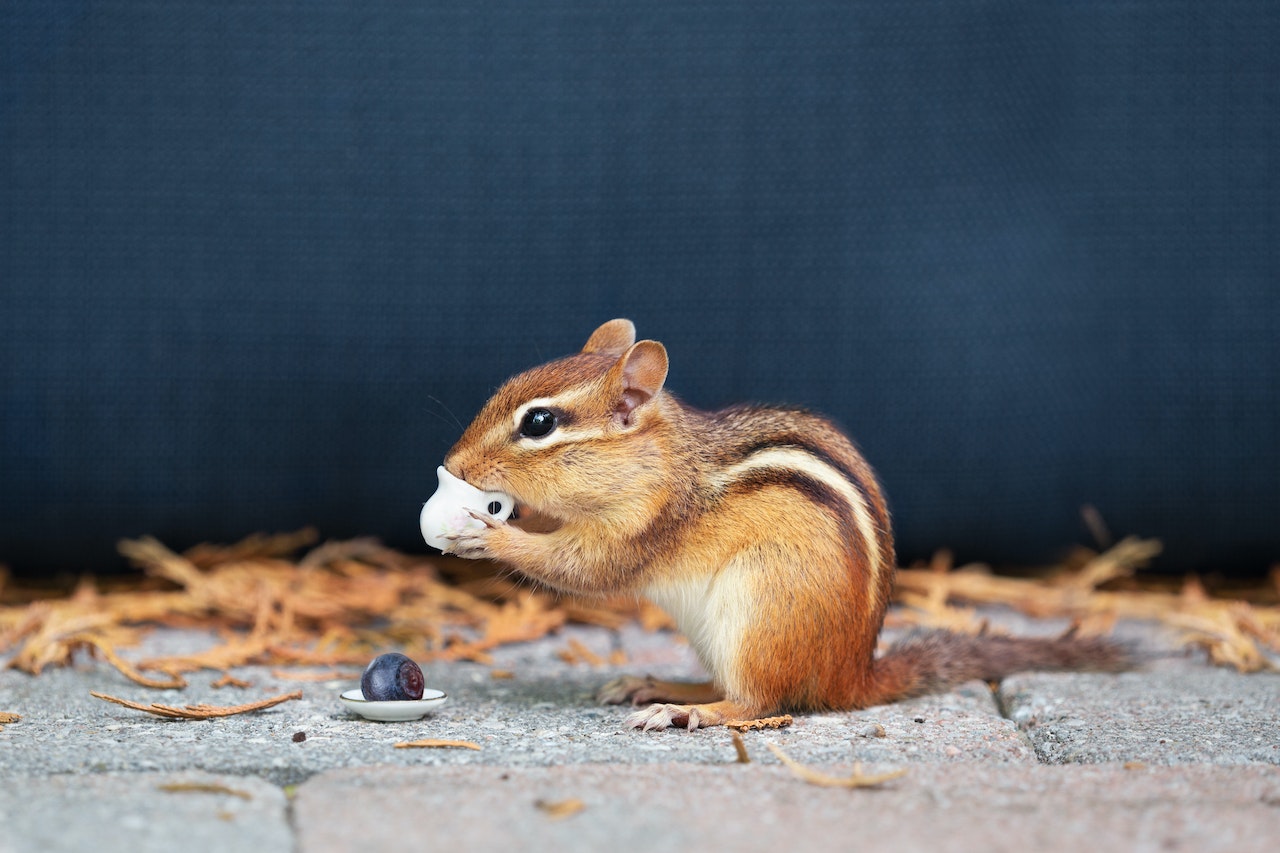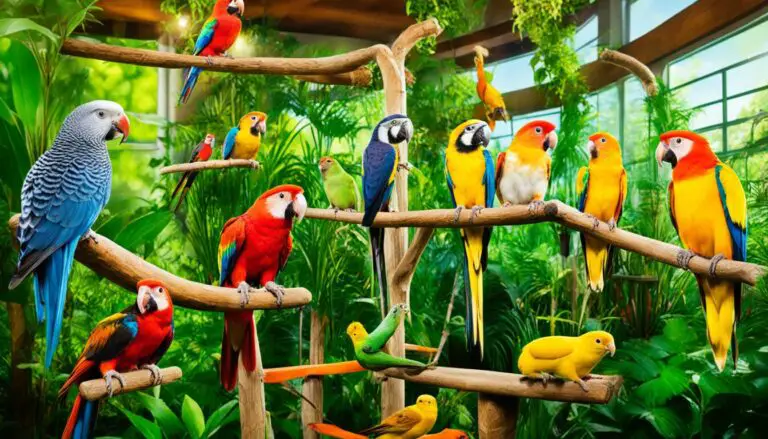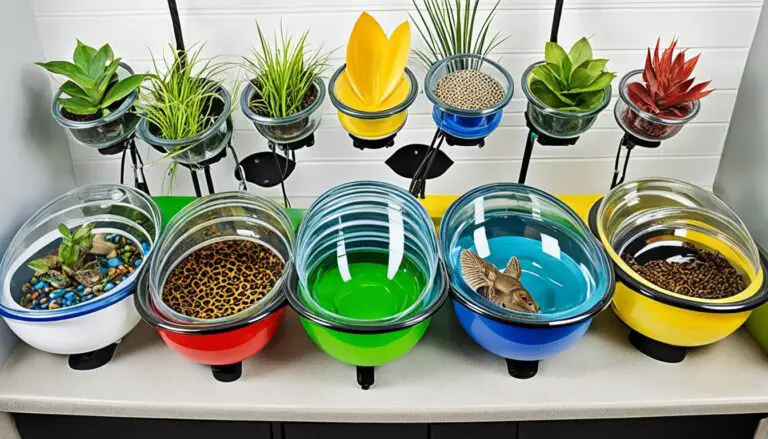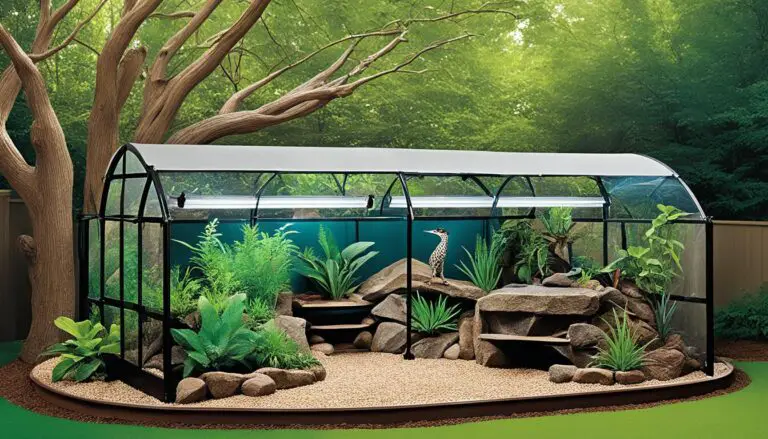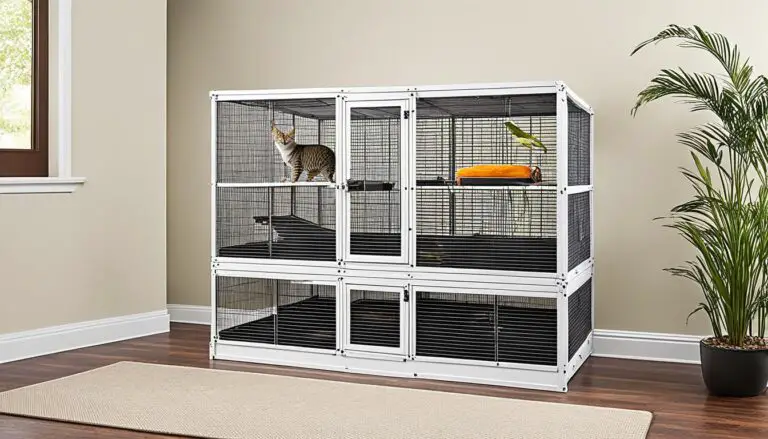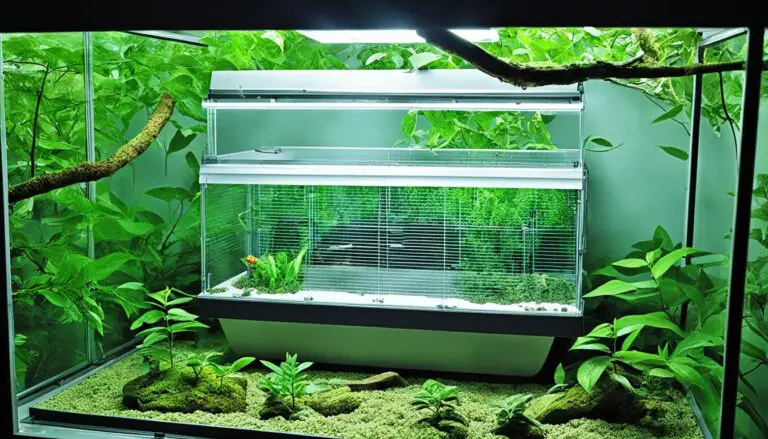Creating the Perfect Habitat for Your Exotic Pet [Ultimate Guide]
Having an exotic pet can be a thrilling and rewarding experience.
These unique creatures require special care and attention, including providing them with a suitable habitat that mimics their natural environment.
In this ultimate guide, we will explore the essential aspects of creating the perfect habitat for your exotic pet.
From enclosure selection to temperature regulation, we will cover everything you need to know to ensure the well-being and happiness of your extraordinary companion.
Key Takeaways:
- Choose an appropriate enclosure that provides enough space for your exotic pet to move and engage in natural behaviors.
- Maintain proper temperature, humidity, and lighting conditions within the habitat.
- Select suitable substrates and provide hiding places for your pet’s comfort.
- Offer enrichment opportunities to keep your pet mentally stimulated and active.
- Provide a balanced diet and clean, fresh water for your exotic pet.
- Regularly monitor your pet’s health, behavior, and hygiene.
- Socialize and interact with your pet according to their species’ needs.
- Avoid common mistakes such as inadequate enclosure size and improper lighting.
- Plan and prepare for traveling and emergencies with your exotic pet.
- Practice responsible ownership, educate yourself, and support conservation efforts.
Choosing the Right Enclosure
The first and most crucial step in creating the perfect habitat for your exotic pet is selecting an appropriate enclosure.
Consider the size, material, and design that best suits the needs of your specific animal.
Enclosures can vary from glass terrariums to custom-built enclosures or even outdoor pens.
It is essential to provide enough space for your pet to move around comfortably and engage in natural behaviors.
Some factors to consider include:
- Size of the enclosure: Ensure that the enclosure is spacious enough for your pet to roam, climb, and exercise.
- Material: Choose a material that is safe, durable, and easy to clean. Common materials include glass, acrylic, or PVC.
- Ventilation: Proper airflow is necessary to prevent the buildup of moisture and reduce the risk of respiratory issues. Consider using mesh or screened areas for ventilation.
- Security: Ensure that the enclosure is escape-proof and secure to prevent accidental escapes or injury.
- Accessibility: Choose an enclosure that allows easy access for cleaning, feeding, and maintenance.
Temperature and Humidity Control
Maintaining the correct temperature and humidity levels is vital for the health of your exotic pet.
Research the specific requirements of your pet’s species and provide appropriate heating and cooling solutions within the enclosure.
Use thermometers and hygrometers to monitor and regulate these parameters accurately.
Creating temperature and humidity gradients within the habitat allows your pet to choose the most comfortable microclimate.
Here are some guidelines:
- Heating: Provide a heat source such as a heat pad, heat lamp, or ceramic heater to create a warm area in the enclosure. Use thermostats to regulate the temperature and prevent overheating.
- Cooling: Depending on the species, you may need to provide a cooling area, such as a shaded spot or a misting system, to help your pet regulate their body temperature.
- Humidity: Exotic pets from humid environments may require higher humidity levels. Use a hygrometer to monitor humidity and mist the enclosure or provide a humidifier if needed.
- Temperature gradients: Create a temperature gradient within the enclosure, allowing your pet to move to different areas and regulate their body temperature as they would in the wild.
Lighting and Photoperiod
Proper lighting is crucial for exotic pets, as it affects their biological rhythms and overall well-being.
Different species have varying light requirements, including the need for specific wavelengths such as UVB.
Use specialized lighting fixtures that replicate natural sunlight to provide the necessary light spectrum.
Additionally, establish a consistent photoperiod to mimic day and night cycles, promoting regular feeding, resting, and activity patterns.
Consider the following:
- UVB Lighting: Many reptiles and amphibians require UVB light to synthesize vitamin D3, which is essential for calcium absorption and overall health. Use UVB bulbs specifically designed for reptiles and amphibians, and replace them according to the manufacturer’s recommendations.
- Basking Lights: Provide a heat source in the form of basking lights to create a warm spot for your pet to thermoregulate. Use bulbs that emit UVA and heat to simulate the natural sun’s warmth.
- Photoperiod: Establish a consistent lighting schedule that mimics natural day and night cycles. Use timers to automate the lighting schedule and maintain a consistent photoperiod.
- Light Intensity: Consider the specific light intensity requirements of your pet’s species. Some animals may require higher or lower light intensities, so research the recommended levels and adjust accordingly.
Substrate Selection
Choosing the right substrate for your exotic pet’s enclosure is essential for maintaining hygiene and providing a comfortable environment.
Research the substrate preferences of your pet’s species and consider factors such as absorbency, ease of cleaning, and non-toxicity.
Here are some substrate options for different types of exotic pets:
- Reptiles and Amphibians: Options include coconut coir, cypress mulch, orchid bark, reptile carpet, and paper towels. Avoid substrates like sand or gravel that can cause impaction if ingested.
- Arachnids and Insects: Bedding materials like coconut fiber, peat moss, or vermiculite can be used for burrowing species. Non-toxic soil or sand can be suitable for ground-dwelling species.
- Small Mammals: Bedding materials such as aspen shavings, paper-based products, or recycled paper bedding are often recommended for small mammals like guinea pigs or hamsters.
Remember to regularly clean and replace the substrate to maintain a clean and healthy environment for your pet.
Creating Hiding Places
Exotic pets often require hiding places to feel secure and reduce stress.
Incorporate various hiding spots, such as caves, tunnels, or foliage, into the enclosure design.
These hideouts should be easily accessible and appropriately sized for your pet to retreat to whenever they desire privacy or protection.
Hiding places can also serve as observation points, allowing your pet to observe its surroundings without feeling exposed.
Consider the following:
- Natural Hideouts: Use rocks, logs, or driftwood to create natural-looking hiding spots in the enclosure. Ensure that they are securely positioned to prevent any accidents.
- Artificial Hideouts: Consider using commercially available hideouts made from non-toxic materials. These can include caves, tunnels, or shelters specifically designed for the needs of your pet’s species.
- Multiple Hiding Places: Provide several hiding places throughout the enclosure to accommodate your pet’s preferences. Place them in different areas and at various heights to create a sense of security.
Having ample hiding places will help your pet feel safe and secure, reducing stress and promoting natural behaviors.
Providing Enrichment Opportunities
Enrichment plays a crucial role in keeping your exotic pet mentally stimulated and physically active.
Include various environmental enrichment items such as climbing structures, perches, branches, and toys that mimic natural elements of their habitat.
Regularly rotate and introduce new enrichment items to prevent boredom and encourage exploration and foraging behaviors.
Here are some ideas:
- Climbing Structures: Install branches, vines, or specially designed climbing structures to encourage your pet to climb and explore their habitat.
- Perches and Platforms: Provide different levels and perching spots for your pet to rest and observe their surroundings.
- Foraging Toys: Use food puzzle toys, hiding treats or insects within theenclosure, to stimulate your pet’s natural foraging instincts and provide mental stimulation.
- Environmental Stimuli: Consider adding objects such as mirrors, hanging toys, or even gentle sounds to mimic natural elements in the wild and keep your pet engaged.
Remember to regularly assess and update the enrichment items based on your pet’s preferences and safety considerations.
Feeding and Watering Solutions
Understanding your exotic pet’s dietary requirements is essential for their overall health and well-being.
Consult with a veterinarian or specialist to determine the appropriate diet for your pet’s species.
Provide a balanced and varied diet that includes fresh fruits, vegetables, insects, or specific commercial food formulated for your pet.
Ensure access to clean and fresh water at all times, using dishes or water dispensers suitable for the size and behavior of your pet.
Consider the following:
- Species-Specific Diet: Research the specific dietary needs of your pet’s species, including the correct balance of protein, vegetables, and supplements.
- Gut Loading: If you feed live insects to your pet, gut load them with nutritious food before offering them as a meal. This enhances the nutritional value for your pet.
- Calcium and Vitamin Supplements: Some exotic pets may require additional calcium or vitamin supplements. Consult with a veterinarian to determine if supplementation is necessary and follow their recommendations.
- Water Sources: Use shallow dishes or water dispensers that are easily accessible to your pet. Clean and replenish the water regularly to ensure freshness.
Remember to monitor your pet’s weight and adjust their diet accordingly to maintain a healthy body condition.
Health and Hygiene Maintenance
Maintaining good health and hygiene is crucial for your exotic pet’s longevity.
Regularly clean and sanitize the enclosure, removing any waste, uneaten food, or soiled substrate.
Conduct routine health checks and consult with a veterinarian experienced in exotic pets for vaccinations, parasite prevention, and overall wellness examinations.
Establish a proper grooming routine based on the specific needs of your pet’s species. Consider the following:
- Regular Cleaning: Develop a cleaning schedule that includes regular spot cleaning to remove waste and soiled substrate. Deep clean the entire enclosure periodically to ensure hygiene.
- Disinfection: Use appropriate disinfectants that are safe for your pet and follow the instructions carefully. Ensure that the enclosure is thoroughly rinsed and dried before reintroducing your pet.
- Veterinary Care: Schedule regular veterinary check-ups to monitor your pet’s health, administer necessary vaccinations, and address any concerns. Find a veterinarian who specializes in exotic pets for the best care.
- Grooming: Different species have different grooming requirements. This can include nail trims, beak trims, feather care, or dental care. Consult with a veterinarian or experienced exotic pet groomer for guidance.
Maintaining a clean and healthy environment is essential for preventing illness and promoting your pet’s well-being.
Regular Monitoring and Observation
Observing and monitoring your exotic pet’s behavior and overall well-being is essential to detect any signs of illness or stress promptly.
Pay attention to changes in appetite, activity levels, skin condition, or any unusual behaviors.
Maintain a record of your pet’s behavior and health, including eating patterns, shedding cycles, and any notable observations.
This information can be valuable in identifying potential issues or concerns.
Here are some tips for monitoring and observing your exotic pet:
- Daily Observations: Set aside time each day to observe your pet’s behavior, eating habits, and activity levels. This will help you notice any changes or abnormalities.
- Keeping a Journal: Maintain a journal or record of your pet’s behaviors, such as feeding times, activity levels, shedding cycles, or any unusual observations. This will help you track patterns and identify potential issues.
- Behavioral Changes: Be attentive to any changes in behavior, such as excessive hiding, aggression, decreased or increased activity, or changes in vocalization. These can be indications of stress, illness, or environmental issues.
- Physical Condition: Regularly check your pet for any signs of injury, parasites, or abnormalities. Look for changes in skin color or texture, lumps or bumps, abnormal shedding, or changes in body weight.
- Consult with Experts: If you notice any concerning symptoms or significant changes in your pet’s behavior or health, consult with a veterinarian experienced in exotic pets. They can provide guidance, perform necessary examinations, and recommend appropriate treatment if needed.
Regular monitoring and observation allow you to intervene early and seek professional help if necessary, ensuring your pet’s well-being.
Socialization and Interaction
While exotic pets may have different socialization needs compared to traditional pets, providing appropriate socialization and interaction is still essential.
Research the social behavior of your pet’s species and provide opportunities for mental stimulation and engagement.
Some exotic pets may benefit from supervised interaction with their owners or even with compatible individuals of the same species, promoting overall well-being and preventing boredom.
Consider the following:
- Species-Specific Socialization: Understand the social needs of your pet’s species. Some exotic pets prefer solitude, while others thrive on social interaction. Respect your pet’s natural behavior and provide an environment that suits their social preferences.
- Mental Stimulation: Engage your pet’s mind with interactive toys, puzzles, or training exercises. Offer rewards and positive reinforcement to encourage desired behaviors.
- Companion Species: If appropriate for your pet’s species, consider providing opportunities for social interaction with compatible individuals. Consult with experts or experienced pet owners to ensure compatibility and safety.
Remember to observe your pet’s behavior during socialization and adjust accordingly to ensure a positive experience.
Common Mistakes to Avoid
When creating a habitat for your exotic pet, it is essential to avoid common mistakes that can negatively impact their health and well-being.
Some common errors include inadequate enclosure size, incorrect temperature or humidity levels, poor substrate choices, improper lighting, and insufficient hiding places or enrichment.
Conduct thorough research, consult with experts, and continuously educate yourself to ensure you provide the best possible habitat for your pet.
Avoid the following mistakes:
- Insufficient Space: Ensure that the enclosure provides enough space for your pet to move, climb, and engage in natural behaviors.
- Temperature and Humidity Neglect: Maintain the correct temperature and humidity levels according to your pet’s species requirements. Inadequate or extreme conditions can lead to health issues.
- Inappropriate Substrate: Choose substrates that are safe, non-toxic, and suitable for your pet’s needs. Avoid substrates that can cause impaction or respiratory problems.
- Improper Lighting: Provide the necessary UVB lighting and establish a consistent photoperiod to support your pet’s health and natural behavior.
- Lack of Hiding Places and Enrichment: Create a habitat that includes hiding places, climbing structures, and enrichment items to promote mental stimulation and natural behaviors.
By avoiding these common mistakes, you can ensure a safe and enriching environment for your exotic pet.
Traveling with Your Exotic Pet
If you plan to travel with your exotic pet, proper preparation and planning are crucial.
Ensure that you comply with all legal requirements and restrictions regarding exotic pet transportation.
Research and invest in suitable travel carriers or containers that provide a secure and comfortable environment for your pet during transit.
Gradually acclimate your pet to the carrier and practice short trips before embarking on longer journeys.
Consider the following tips:
- Legal Requirements: Check local regulations and travel restrictions for transporting exotic pets. Obtain any necessary permits or certifications.
- Suitable Travel Carrier: Invest in a carrier or container that is appropriate for your pet’s size and species. Ensure that it provides adequate ventilation, security, and comfort.
- Acclimation and Training: Gradually introduce your petto the carrier or container in a positive and stress-free manner. Start with short trips to familiarize them with the travel experience before embarking on longer journeys.
- Safety and Comfort: Place familiar bedding, toys, or items with your pet’s scent in the carrier to provide a sense of security. Ensure that the carrier is properly secured during travel to prevent accidents or escapes.
- Food and Water: Provide access to fresh water and offer a small meal before traveling. Avoid feeding a full meal right before travel to prevent potential discomfort.
- Rest Stops: Plan for regular rest stops during long journeys to allow your pet to stretch, use the bathroom if needed, and provide fresh water.
- Monitoring: Keep an eye on your pet during travel, ensuring they remain comfortable and show no signs of distress. If you notice any concerns, find a safe place to stop and address the issue.
By following these guidelines, you can make travel safer and less stressful for your exotic pet.
Emergency Preparedness
In the event of an emergency or natural disaster, it is vital to have a well-thought-out plan to ensure the safety of your exotic pet.
Prepare an emergency kit containing essential supplies, including food, water, medication, and any necessary documentation.
Research emergency shelters or boarding facilities that can accommodate exotic pets if evacuation becomes necessary.
Keep contact information for veterinarians and exotic pet specialists readily available.
Consider the following for emergency preparedness:
- Emergency Kit: Create an emergency kit that includes enough food, water, and medication for your pet for at least a week. Include basic first aid supplies, a leash or harness, and any necessary documentation.
- Evacuation Plan: Identify potential evacuation routes and destinations in advance. Research local emergency shelters or boarding facilities that accept exotic pets, as not all may be equipped to do so.
- Identification: Ensure your pet is properly identified with a collar and tag, microchip, or other identification methods. Keep a copy of your pet’s medical records, identification, and any necessary permits or licenses in a waterproof container.
- Communication Plan: Develop a communication plan to stay informed about potential emergencies or evacuation orders. Keep emergency contact numbers and local animal control information readily available.
- Carrier and Supplies: Keep your pet’s carrier or travel container easily accessible and ready to use in case of an emergency evacuation. Stock it with bedding, food, water, and comfort items.
By being prepared and having a clear plan in place, you can act quickly and ensure the safety of your exotic pet in emergency situations.
Responsible Ownership
Owning an exotic pet comes with a great deal of responsibility.
Educate yourself about the specific needs and requirements of your pet’s species.
Stay updated on the latest research, guidelines, and regulations regarding exotic pet care.
Promote conservation efforts and responsible breeding practices by supporting reputable organizations and avoiding illegal or unethical pet trade.
Be prepared to provide lifelong care and commitment to your exotic pet. Consider the following:
- Research and Compliance: Research and understand the legal requirements and regulations regarding exotic pet ownership in your area. Ensure that you comply with all permits, licenses, or other legal obligations.
- Education and Continued Learning: Stay informed about the specific needs, behaviors, and health considerations of your pet’s species. Continuously educate yourself through reputable sources, scientific literature, and expert advice.
- Conservation and Ethical Considerations: Support reputable organizations and conservation efforts working towards the preservation of exotic species and their habitats. Avoid participating in illegal or unethical pet trade activities.
- Lifelong Commitment: Be prepared for the long-term commitment of providing proper care, nutrition, and enrichment for your exotic pet. Consider their potential lifespan and the resources required to meet their needs throughout their life.
By being a responsible owner, you can contribute to the well-being and conservation of exotic species while providing a lovingand suitable home for your pet.
Conclusion
Creating the perfect habitat for your exotic pet requires careful consideration and attention to detail.
By choosing the right enclosure, regulating temperature and humidity, providing appropriate lighting and substrate, and incorporating hiding places, enrichment, and socialization opportunities, you can ensure a comfortable and stimulating environment for your extraordinary companion.
Remember to prioritize your pet’s health, safety, and well-being by monitoring their behavior, maintaining proper hygiene, and seeking professional advice when needed.
With responsible ownership and a commitment to lifelong care, you can provide the perfect habitat for your exotic pet, fostering a rewarding and fulfilling relationship.
FAQs
Can I use a regular glass aquarium as an enclosure for my exotic pet?
It depends on the species and its specific requirements.
While glass aquariums can be suitable for certain exotic pets, others may require custom-built enclosures or specific habitat designs.
Research the needs of your pet’s species to determine the most appropriate enclosure.
How often should I clean my exotic pet’s enclosure?
Regular cleaning is essential to maintain hygiene.
The frequency of cleaning depends on the species and the enclosure’s size.
Remove waste, uneaten food, and clean soiled substrate regularly.
Conduct a thorough cleaning and disinfection as needed, following appropriate protocols.
Can I provide live plants in my exotic pet’s enclosure?
Live plants can be beneficial in providing a natural and stimulating environment for your exotic pet.
However, ensure that the plants are non-toxic and safe for your pet’s species.
Research the specific requirements and potential risks associated with using live plants before introducing them.
What should I do if my exotic pet stops eating?
A loss of appetite can be a sign of various underlying health issues or stress.
Monitor your pet closely and consult with a veterinarian experienced in exotic pets if the problem persists.
They can provide guidance and perform necessary examinations to determine the cause and appropriate treatment.
Are there any legal restrictions on owning exotic pets?
Yes, owning exotic pets may be subject to legal restrictions and regulations, varying from region to region.
Research and comply with the local laws regarding exotic pet ownership, permits, and species-specific regulations to ensure legal and responsible ownership.
Peter Stones is the founder of Exotic Pets Place, the leading online resource for exotic pet care information.
With over 10 years of hands-on exotic pet ownership experience, he is deeply passionate about sharing his expertise to help others properly care for their unusual pets.
When he's not writing extensively researched articles or connecting with fellow exotic pet enthusiasts worldwide, you can find Peter at home tending to his own beloved menagerie of exotic animals.

